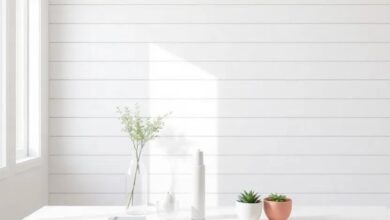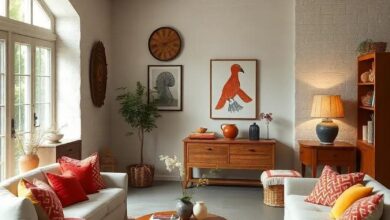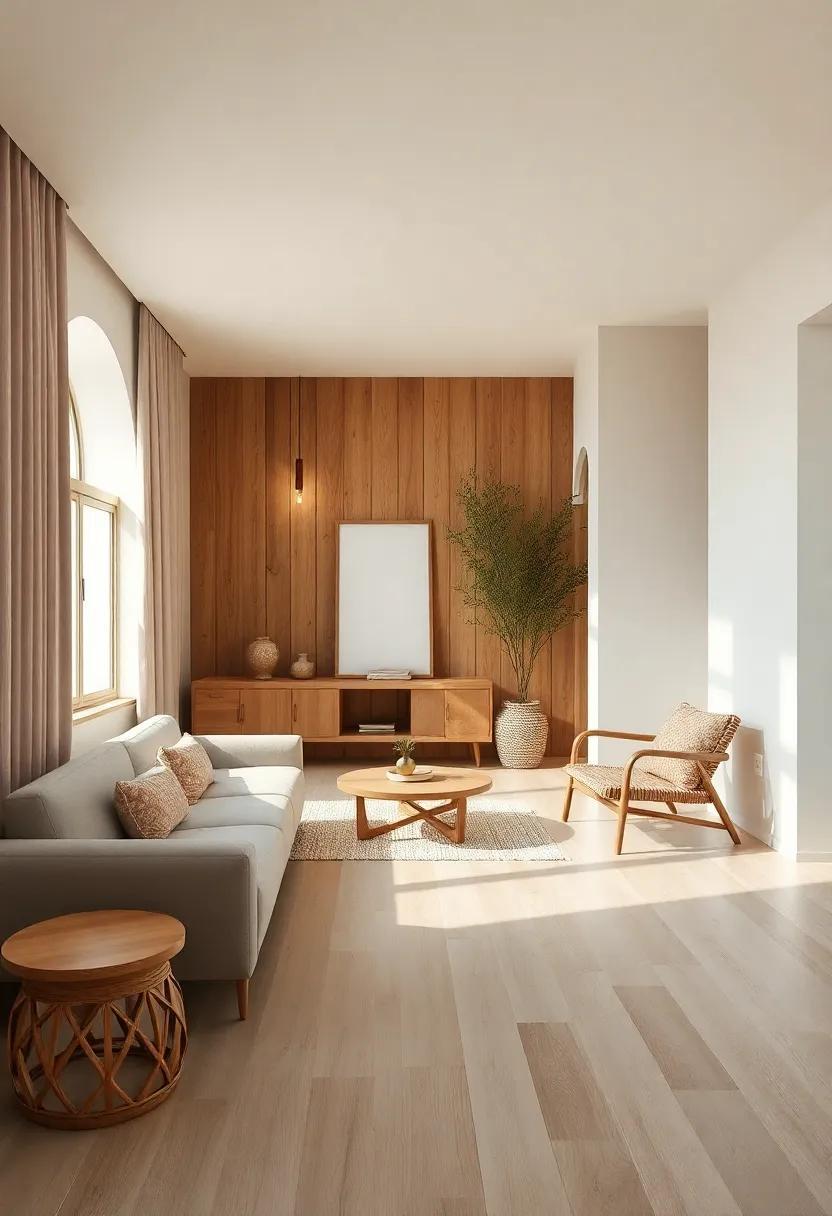
Embracing Nature: The Charm of Earthy Tones in Rustic Interior Design
In a world increasingly dominated by sleek lines and polished surfaces,there exists a timeless allure found in the embrace of nature.As we seek solace from the hustle and bustle of modern life, rustic interior design has emerged as a sanctuary, embodying warmth and authenticity. At the heart of this aesthetic lies a captivating palette of earthy tones—rich browns, soft greens, and muted terracottas—that evoke the raw beauty of the natural world. These colors not only breathe life into our homes but also create a sense of grounding and comfort that resonates deeply with our primal instincts. In this article,we will explore the charm of earthy hues in rustic interior design,uncovering how they can transform our living spaces into havens of tranquility while fostering a profound connection to the environment that surrounds us. Join us on this journey to discover the magic that nature-inspired decor can bring to our everyday lives.
Embracing the Warmth of Earthy Tones in Rustic Decor
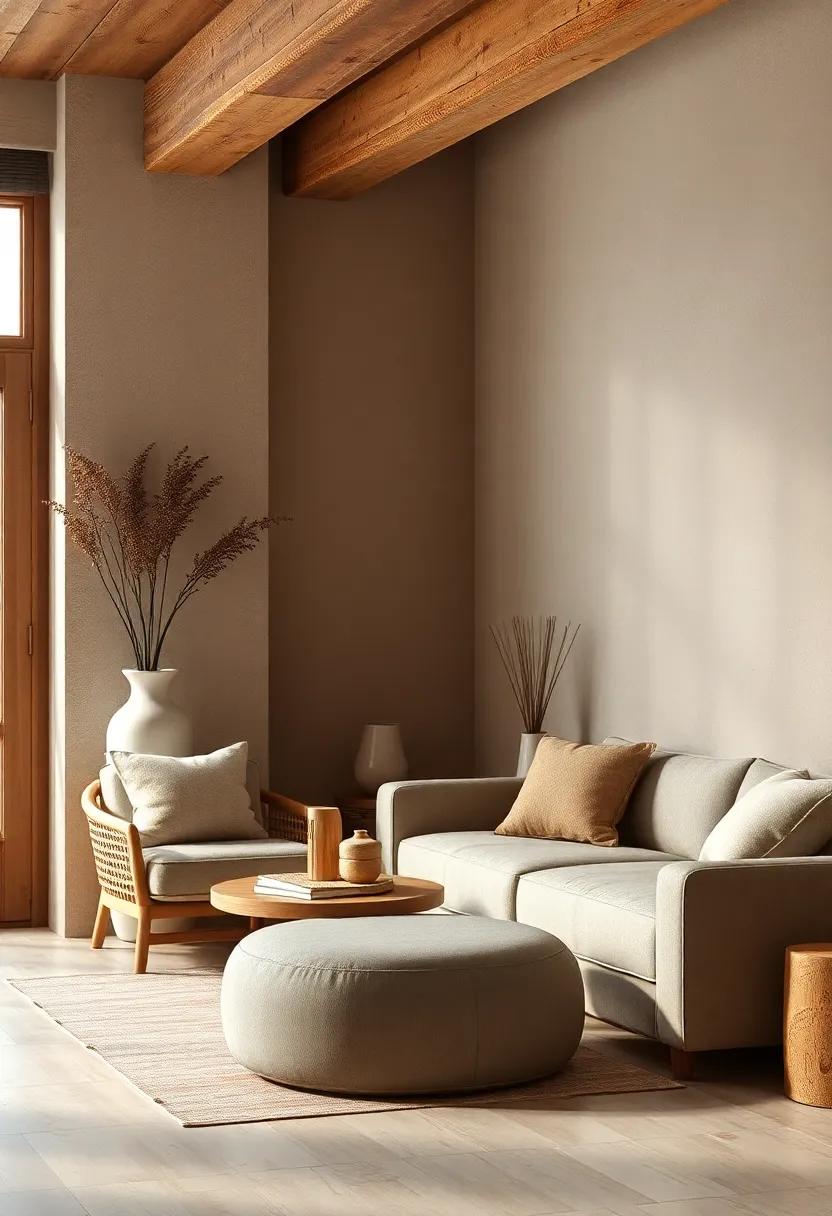
In the realm of interior design,earthy tones weave a narrative that speaks to our primal connection with nature.Colors such as deep browns, warm terracottas, and muted greens evoke a sense of grounding, creating spaces that reflect tranquility and authenticity.Utilizing these hues in rustic decor invites the outside in, allowing the home to resonate with the warmth and textures of the natural world. Incorporate materials such as reclaimed wood, stone, and woven textiles, enhancing the overall aesthetic with organic elements that complement the color palette.
To further the rustic charm, consider the interplay of various shades and textures, crafting a multidimensional visual experience. A few key elements can amplify the beauty of earthy tones:
- Layering Textures: Use textiles that vary in texture, such as linen, burlap, and wool, to add depth and warmth.
- Accent Pieces: Introduce pottery and natural sculptures that echo the color scheme and bring tactile interest.
- Lighting: Opt for soft lighting to enhance the gentle glow of earthy tones, creating a cozy atmosphere.
Capturing the Spirit of Nature Through Textured Fabrics
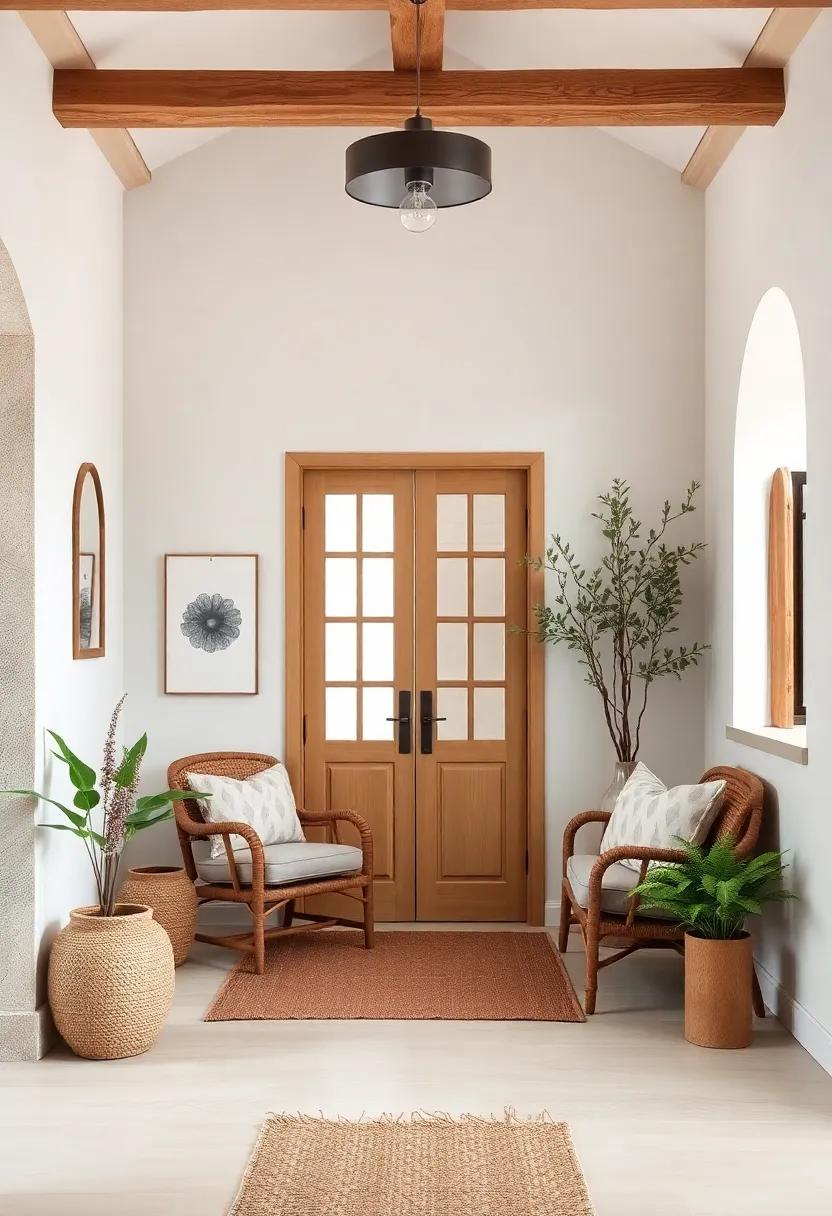
In the world of rustic interior design, the use of textured fabrics allows us to weave the essence of the natural world into our living spaces. Fabrics such as linen, burlap, and wool bring a tactile depth that mirrors the variety found in nature—from the rough bark of a tree to the soft petals of a wildflower. incorporating these materials not only enhances the aesthetic appeal but also encourages a connection to the outdoors. The layering of textures can create a captivating visual narrative that embraces the imperfections found in nature, fostering a sense of warmth and comfort.
Choosing earthy tones as the foundation for these fabrics—muted greens, warm browns, and subtle grays—infuses the space with a serene ambiance reminiscent of a forest retreat. Consider the following elements when selecting textiles for your decor:
- Natural Fibers: Opt for materials like cotton and hemp for sustainability.
- Organic Patterns: Look for prints that resemble natural elements like leaves or stones.
- Layering Techniques: Combine various fabrics to add depth and character.
Integrating these fabrics thoughtfully can transform a room, making it a sanctuary that reflects the tranquility and charm of the great outdoors.Here’s a simple table to visualize some common natural fabrics and their characteristics:
| Fabric | Texture | Color Palette |
|---|---|---|
| Linen | Soft,breathable | Soft whites,muted pastels |
| Burlap | Coarse,rustic | Natural browns,earthy tones |
| wool | Warm,fuzzy | Deep greens,warm neutrals |
Sculpting serenity: The Role of natural Materials in Design
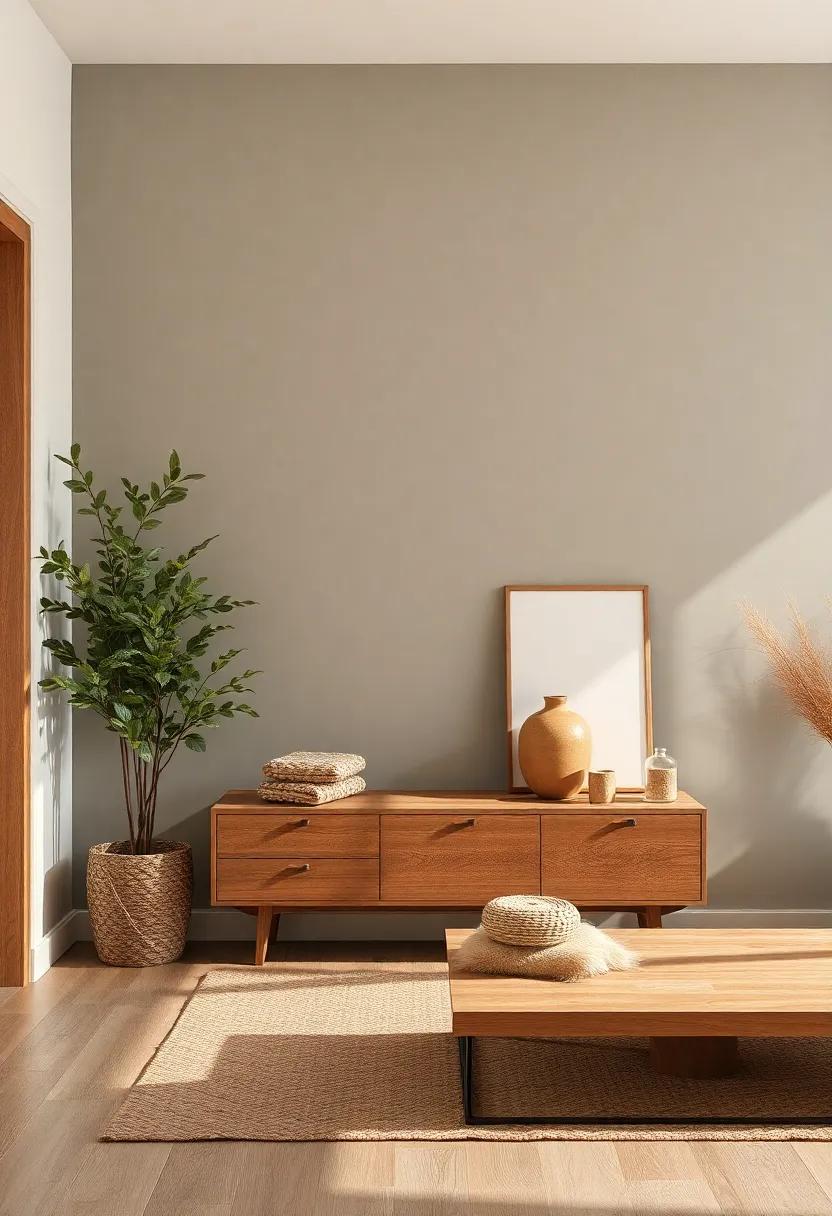
In the realm of interior design, the use of natural materials plays a pivotal role in fostering a sense of calm and balance. Elements such as wood, stone, and clay invite the organic beauty of the outdoors into our living spaces. The textures and hues found in these materials not only enhance aesthetics but also promote a feeling of warmth and serenity. Imagine walking into a room adorned with reclaimed wood beams or a rustic stone fireplace; each piece tells a story,bridging the gap between the home and the natural world outside.
Furthermore, incorporating earthy tones within these natural materials allows for a harmonious color palette that complements any rustic design. Here are some key attributes of earthy tones:
- Warmth: Shades of browns, greens, and beiges create comforting environments.
- timelessness: Earthy colors never go out of style, ensuring longevity in design.
- Versatility: They pair beautifully with a range of furniture styles and decor.
| Material | Benefits |
|---|---|
| Wood | Natural warmth and durability |
| Stone | timeless elegance and stability |
| Clay | Sustainability and textural diversity |
The beauty of Raw Wood Accents in Cozy Interiors
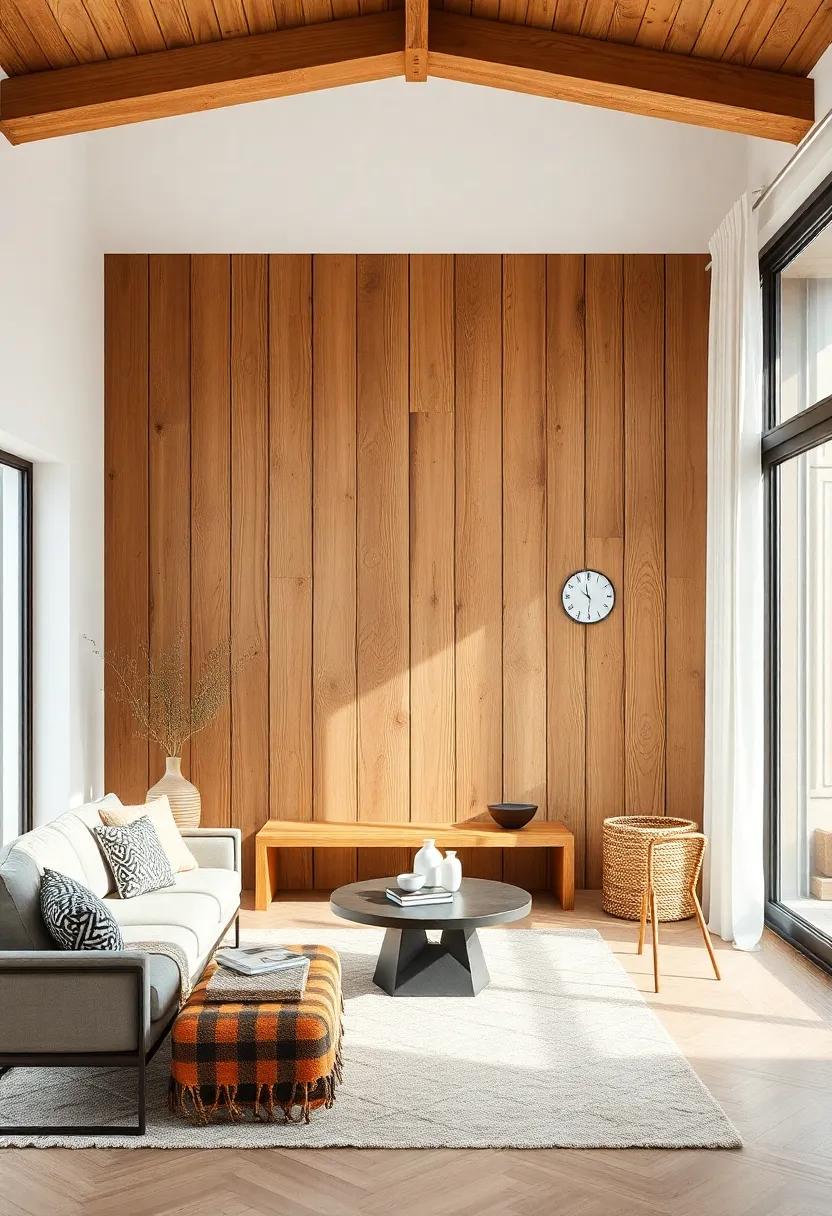
The allure of raw wood accents breathes life into cozy interiors, intertwining the beauty of nature with the warmth of home. When incorporated thoughtfully,these elements create a harmonious visual narrative that speaks to both the rustic enthusiast and the modern minimalist alike. From exposed beams adorning the ceiling to reclaimed wooden furniture that tells a story of its own, the textures and grains of natural wood evoke a sense of tranquility and earthiness. Consider integrating:
- Reclaimed Wood Shelves - Perfect for displaying cherished items while adding character.
- Live Edge Tables - Unique pieces that serve both function and art, connecting the indoors with the outdoors.
- Wooden Accents in Lighting – Fixtures that mix metals and wood enhance the overall warmth and ambiance.
Additionally, the play of earthy tones alongside raw wood can amplify the appeal of any space. Choosing a palette that includes soft greens, deep browns, and subtle, warm neutrals can accentuate the organic feel while fostering a welcoming atmosphere.pairing these colors with natural textures such as linens and jute ensures a multi-layered, cozy environment. The following table illustrates popular wood types and their associated tones:
| Wood Type | Color Tone | Best Complementary Colors |
|---|---|---|
| Walnut | Rich Chocolate Brown | Soft Creams and Greens |
| Pine | Warm Honey Hue | Muted Earthy Tones |
| Oak | Golden Tan | Deep Blues and Grays |
Infusing Life into Spaces with Earth-Inspired Color palettes
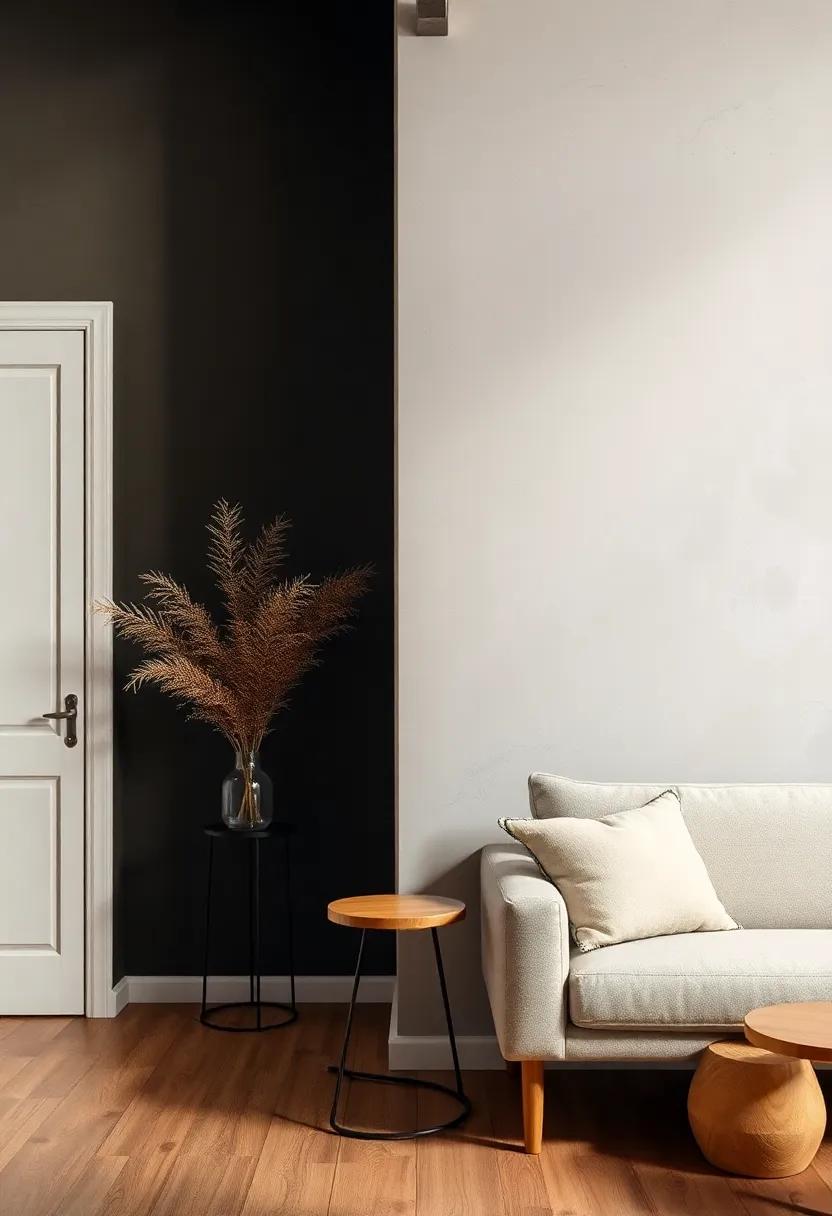
Introducing earth-inspired color palettes into rustic interior design breathes new life into spaces, creating an inviting atmosphere that reflects the beauty of the natural world. Rich browns, muted greens, and soft terracotta hues draw the eye and evoke the tranquil essence of the outdoors. These colors not only enhance the aesthetic appeal of a room, but they also foster a sense of warmth and comfort, making it easier to connect with the environment. Consider layering different tones to create depth, using deep forest greens alongside warm beige or sandy shades for an effortlessly harmonious look.
When selecting these earthy tones, texture plays a pivotal role in elevating the overall design. Incorporating materials such as reclaimed wood, stone accents, and textured textiles invites a tactile element that complements the visual palette. Here are a few essential elements to consider:
- Natural Materials: Utilize wood, stone, and clay for furniture and décor.
- Layered Textures: Mix fabrics like burlap,linen,and wool for warmth.
- Lighting: Soft, warm lighting can enhance the earthy tones, creating an inviting ambiance.
To illustrate the impact of varying tones and materials, refer to the table below which showcases complementary earthy color combinations and textures that work beautifully together:
| Color Tone | Complementary Texture |
|---|---|
| Deep Olive Green | Natural Linen |
| Rusty Terracotta | Woven Jute |
| Soft Taupe | Textured Wool |
Creating Balance: Earthy Tones and Harmonious Spaces
in the quest for cozy and inviting interiors, earthy tones provide the foundation for creating spaces that resonate with tranquility and connection to nature. Warm browns, soft greens, and muted terracotta shades come together to weave a narrative of comfort and organic beauty. These colors mimic the hues found in natural landscapes,allowing homeowners to escape the frenetic pace of modern life.By incorporating elements such as wood finishes, textured fabrics, and stone accents, a harmonious balance is achieved, emphasizing the restorative qualities of a rustic atmosphere.
To truly embrace earthy tones, consider integrating various design elements that celebrate nature’s palette. Here are a few suggestions:
- Natural Materials: Use reclaimed wood, stone, and bamboo to enhance the tactile experience.
- Textile Choices: Opt for linen and cotton in earthy tones to soften the ambiance.
- plants: Incorporate greenery through potted plants or living walls to bring life into your spaces.
Moreover, the arrangement of furniture can also play a importent role in achieving balance. A well-thought-out layout that encourages flow and functionality can enhance the overall feel of rustic interiors:
| Furniture Arrangement | Purpose |
|---|---|
| Centre Coffee Table | Encourages conversation and connection. |
| Accent Chairs | adds visual interest and complements the earth tones. |
| Low Lighting Fixtures | Creates a warm and inviting atmosphere. |
The Allure of Nature-Inspired Artwork in Rustic Settings
Nature-inspired artwork brings the essence of the outdoors into rustic interiors, crafting a serene atmosphere that resonates with the beauty of the natural world. These pieces frequently enough feature organic elements such as woodland scenes, floral motifs, and wildlife illustrations that breathe life into any space. Their incorporation of earthy tones—think deep greens, rich browns, and soft yellows—harmonizes seamlessly with rustic materials like reclaimed wood and stone. This synergy not only enhances the aesthetic appeal but also fosters a sense of calm and grounding that is often sought after in home design.
when thoughtfully curated, nature-inspired artwork transforms walls into captivating focal points. Various techniques can be employed to enhance the rustic charm:
- Framing with reclaimed materials enhances the organic feel.
- Mixing styles—pairing abstract art with traditional landscapes—adds character.
- Utilizing natural light to highlight these pieces can create dynamic shadows, emphasizing textures.
| Artwork Type | Color Palette | Material |
|---|---|---|
| Canvas Prints | Muted Earth Tones | High-quality canvas |
| wooden Panels | Deep Greens | Reclaimed wood |
| Metal Art | Rusty Reds & Browns | Weathered steel |
blending Indoor and Outdoor Elements for a Rustic Feel
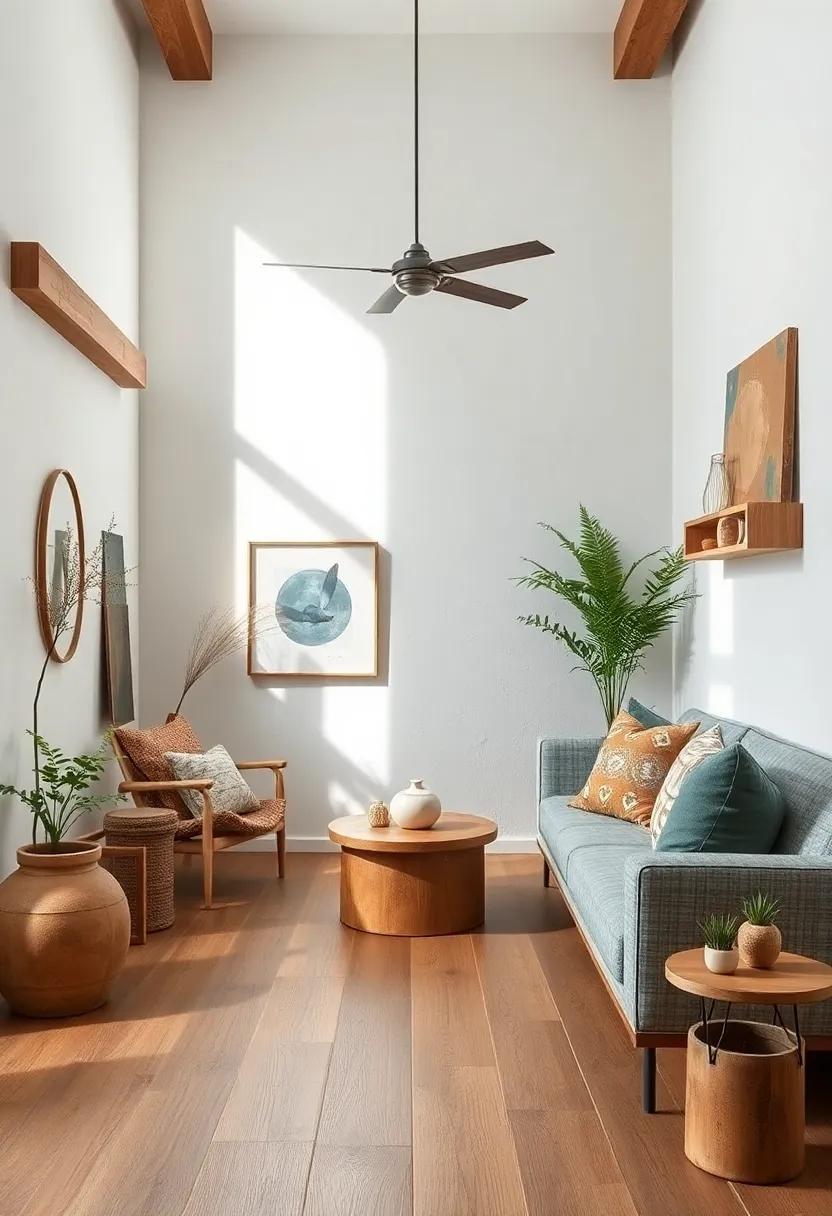
Incorporating natural materials into your interior design can seamlessly merge indoor and outdoor spaces, creating a calming environment that’s reminiscent of rustic living. Utilize elements such as exposed wooden beams, stone walls, and clay accents to add texture and warmth throughout your home. These organic touches, when paired with soft earthy tones, can enhance the overall aesthetic, making your space feel inviting and grounded. Consider integrating furniture made from reclaimed wood or vintage pieces that showcase the beauty of wear and history.
Don’t forget to introduce greenery into your indoor décor to bridge the gap between the exterior and interior. By introducing a selection of houseplants, you can enrich your living space with life and vibrancy. Opt for plants that thrive in various light conditions and complement your aesthetics, such as ferns, succulents, or cascading pothos. Here’s a simple table illustrating some popular plants that enhance a rustic vibe:
| Plant | Light Preference | Height |
|---|---|---|
| Ferns | Indirect Sunlight | 12-24 inches |
| Succulents | Shining Light | 4-12 inches |
| Pothos | Low to Bright Indirect Light | Up to 40 inches |
Utilizing these design principles not only invites nature in but also fosters a sense of tranquility that resonates throughout your space. let the boundaries blur between inside and out, allowing earthy elements to tell a story of connection and harmony.
Echoes of the Forest: Incorporating Greenery in design
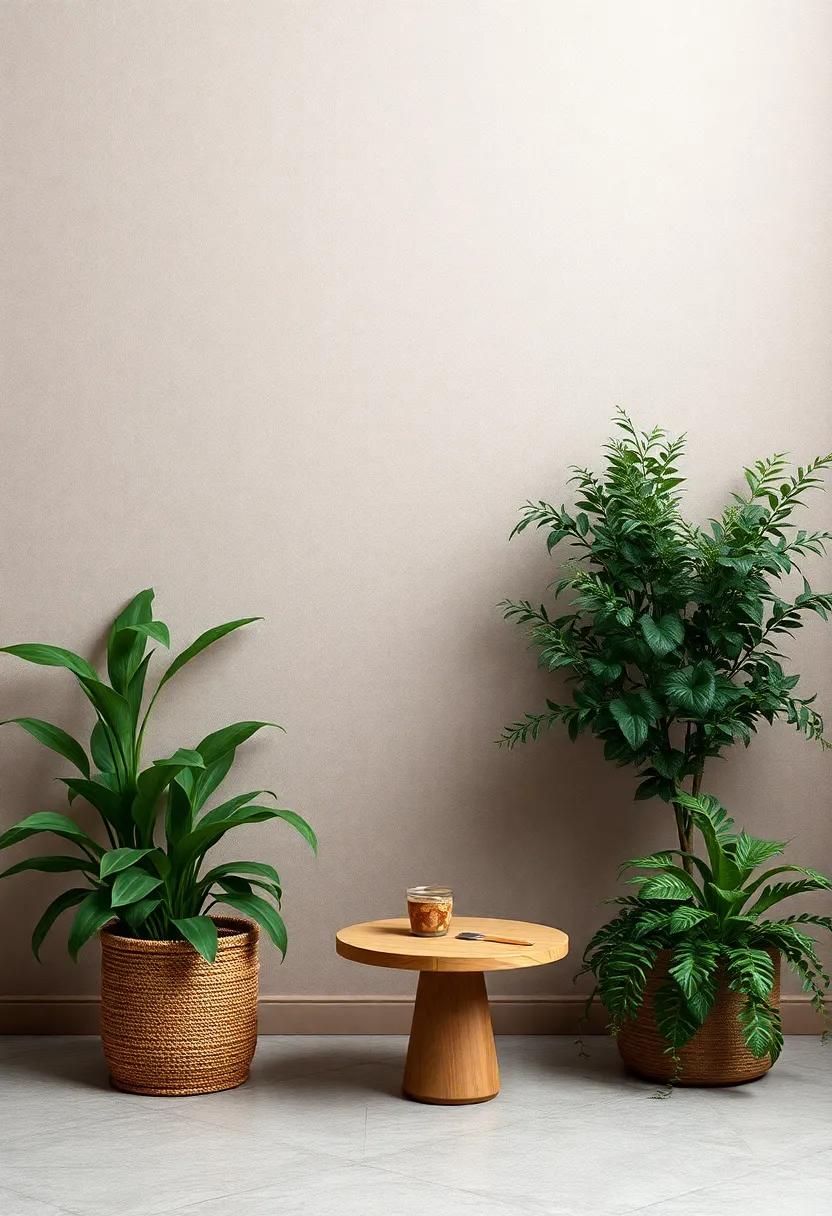
Bringing the essence of the forest indoors can transform a space into a soothing sanctuary. Incorporating natural elements such as wood, stone, and textiles in earthy hues can create a harmonious balance between comfort and the outdoors. Consider using reclaimed wood accents for furniture or wall features, as they not only provide character but also tell a story. Pair these materials with a palette of greens, browns, and soft neutrals to evoke the tranquility of nature. Add in textured fabrics—like linen or cotton—for cushions and curtains to soften the look while enhancing the organic feel.
Along with materials, strategically placed greenery can amplify the connection to nature.Indoor plants, such as ferns, snake plants, and peace lilies, bring life to rustic interiors and improve air quality. Use decorative planters made from natural materials to complement your rustic theme, and hang a few flowering pots in kitchen corners or on window sills for subtle bursts of color. Furthermore, integrating elements like moss walls or vertical gardens can serve as stunning focal points. Below is a simple guide to effective plant choices for rustic designs:
| Plant Type | Ideal Location | Lighting Needs |
|---|---|---|
| Ferns | Bathrooms, Low-Light Areas | Indirect Light |
| Snake Plant | Lively Spaces, Bedrooms | Low to Bright Light |
| Peace Lily | Living Rooms, Offices | Low to Medium Light |
Rustic Lighting: Embracing Warm Hues and Natural Fixtures
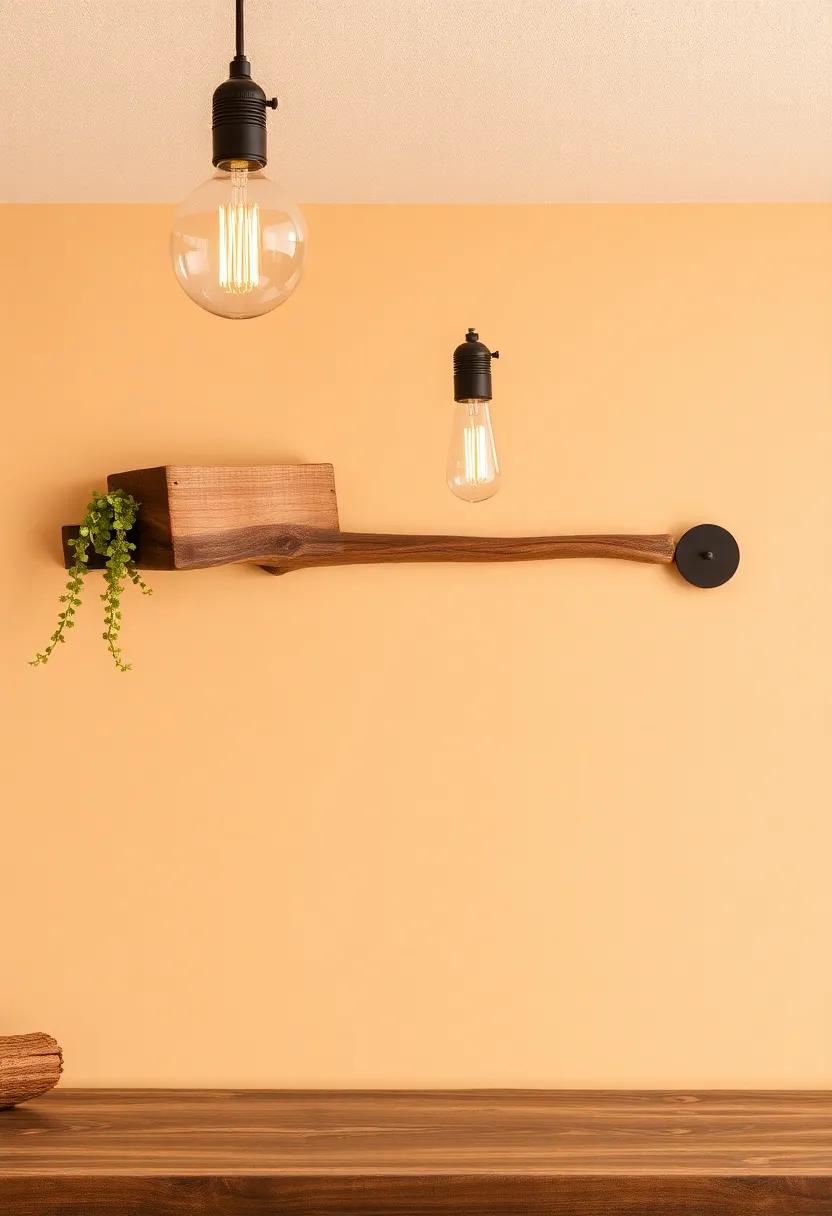
In the realm of rustic interior design, lighting plays a pivotal role in setting the ambiance and enhancing the natural beauty of earthy tones. Incorporating fixtures made from wood, wrought iron, and even repurposed materials can evoke a sense of warmth and authenticity, transforming any space into a cozy retreat. Consider pendant lights with textured glass shades or unique table lamps crafted from driftwood, which can serve as stunning focal points while harmonizing seamlessly with the surrounding decor.The use of dimmers allows for flexibility in brightness, enabling you to create the perfect atmosphere for any occasion.
Color temperature is key when selecting light bulbs for a rustic aesthetic. Aim for soft white bulbs that emit a warm glow,rather than harsh,bright lighting. This can accentuate the rich hues of nature-inspired palettes, such as deep browns, soft greens, and muted golds. By layering different sources of light—overhead fixtures, floor lamps, and wall sconces—you can create depth and dimension in the space. Additionally, consider integrating natural elements like lamps with fabric shades that boast floral or botanical patterns, effectively tying together the rustic theme with organic motifs.
The Comfort of Earthy Rugs: Bringing Nature Indoors
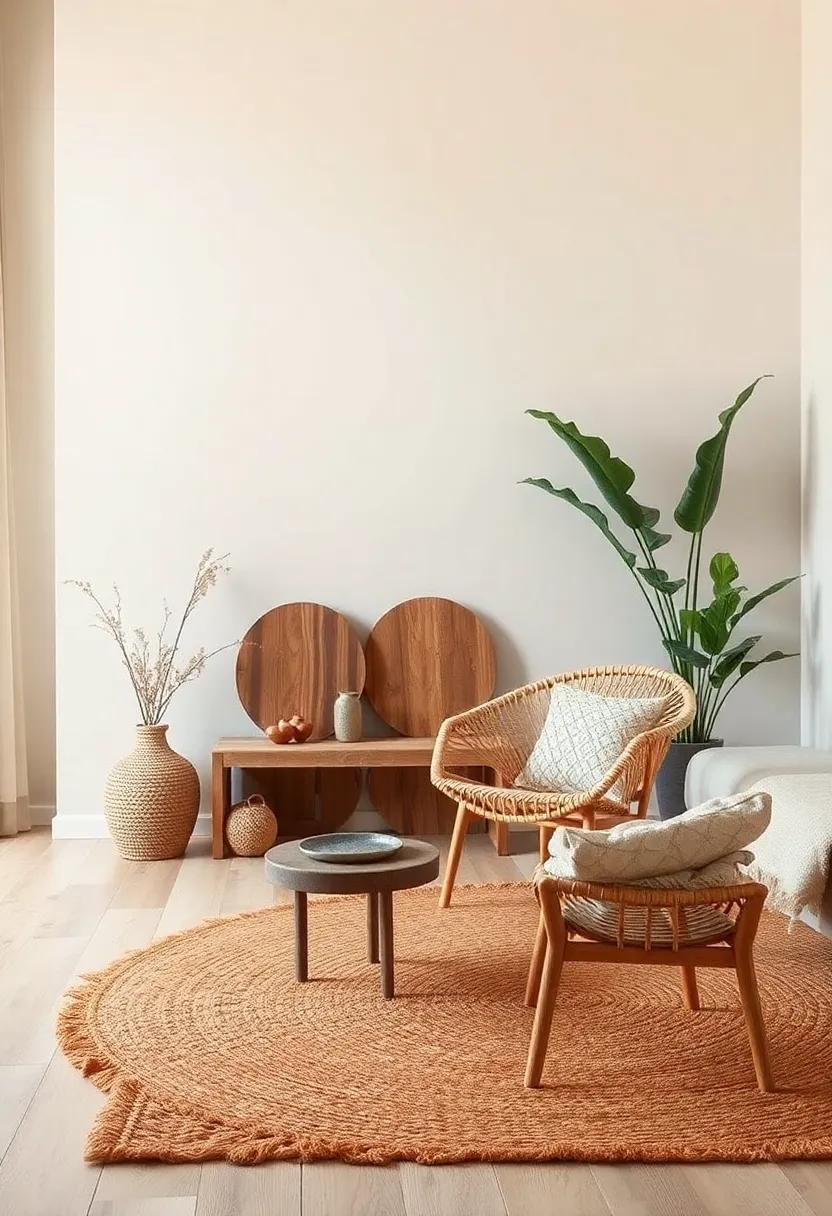
Incorporating earthy rugs into your space not only introduces a tactile element that enhances comfort but also serves as a visual bridge to the natural world outside. crafted from materials like wool, jute, or cotton, these rugs reflect the raw beauty of nature, bringing warmth and softness to your home. They frequently enough come in muted tones of brown, beige, and olive, which can harmoniously blend into any rustic decor. When choosing an earthy rug, consider the following characteristics:
- Texture: The tactile difference can invigorate your space.
- Durability: Natural fibers ensure longevity.
- Versatility: They can elevate a variety of styles, from farmhouse to bohemian.
Earthy rugs also contribute to improved air quality, as many natural materials are less likely to trap dust and allergens compared to synthetic options. Pair them with other eco-kind elements such as reclaimed wood furniture or live plants to create a harmonious indoor landscape that feels expansive and grounded. To illustrate the benefits of these charming floors, consider the following simple comparison of rug materials:
| Material | Comfort Level | Environmental Impact |
|---|---|---|
| Wool | High | Renewable |
| Jute | medium | Biodegradable |
| Cotton | High | Water-intensive |
Nature’s Palette: Crafting a Cohesive Color Scheme
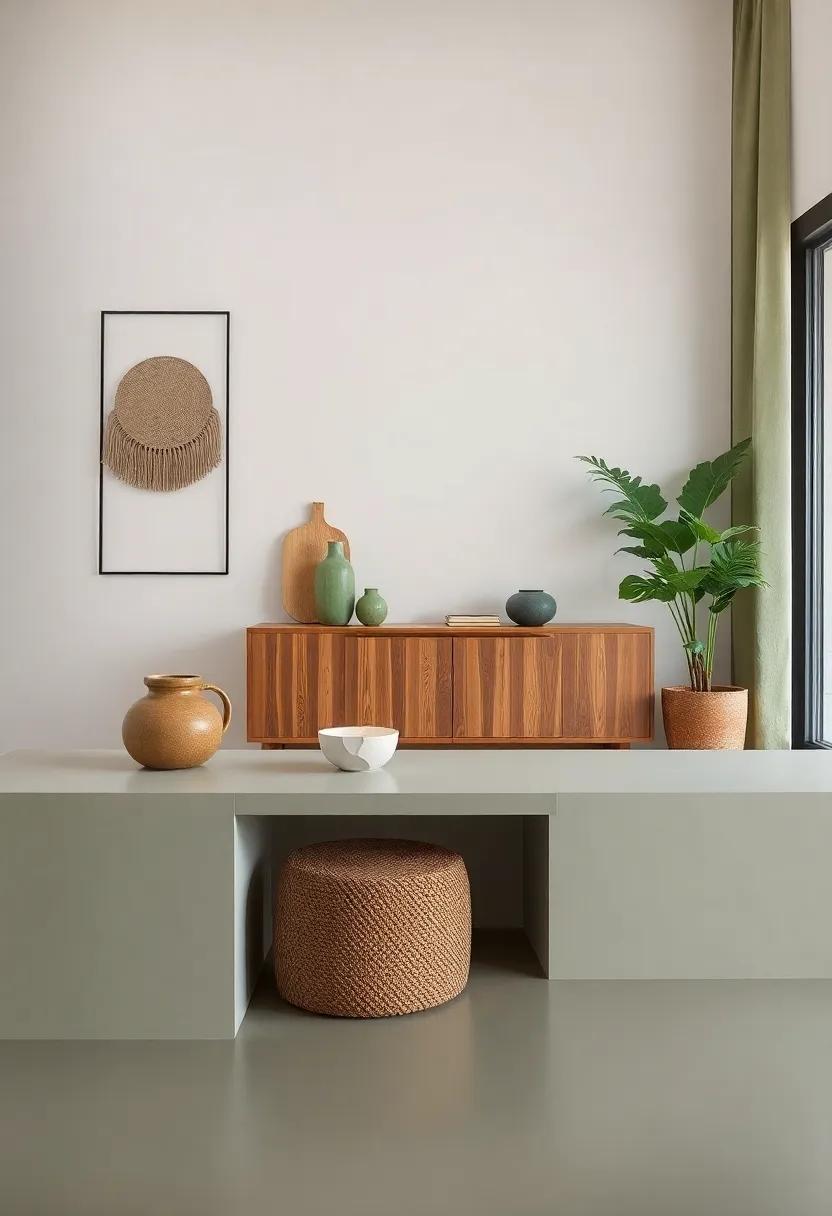
When designing rustic interiors, a well-curated color palette draws inspiration directly from the natural world. To create a harmonious environment, consider using a foundation of earthy tones that mimic the warmth and richness of the landscape surrounding us. These colors can include shades of brown, green, terracotta, and soft grays. By blending these hues, each room can evoke a sense of comfort and connection to nature. Pay attention to how light interacts with these colors throughout the day, adjusting the selection as needed to ensure a cohesive yet dynamic aesthetic.
To achieve balance, incorporate various textures and materials that complement your chosen palette.For instance, elements such as natural wood, stone, and woven fabrics can enhance the overall design while reinforcing the earthy theme.Here are some suggestions for pairing colors effectively:
- Warm browns with muted greens create a serene atmosphere.
- Terracotta accents against soft grays can add warmth and visual interest.
- Deep greens alongside neutral tones foster a calming environment.
Consider using a simple table to visualize your selected colors and their complementary shades:
| Base Color | Complementary Shades |
|---|---|
| Warm Brown | Soft Olive Green, Cream |
| Terracotta | Dusty Blue, Light Gray |
| deep Green | Beige, Rust |
The Rustic Kitchen: Earthy Tones for Inviting Culinary Spaces
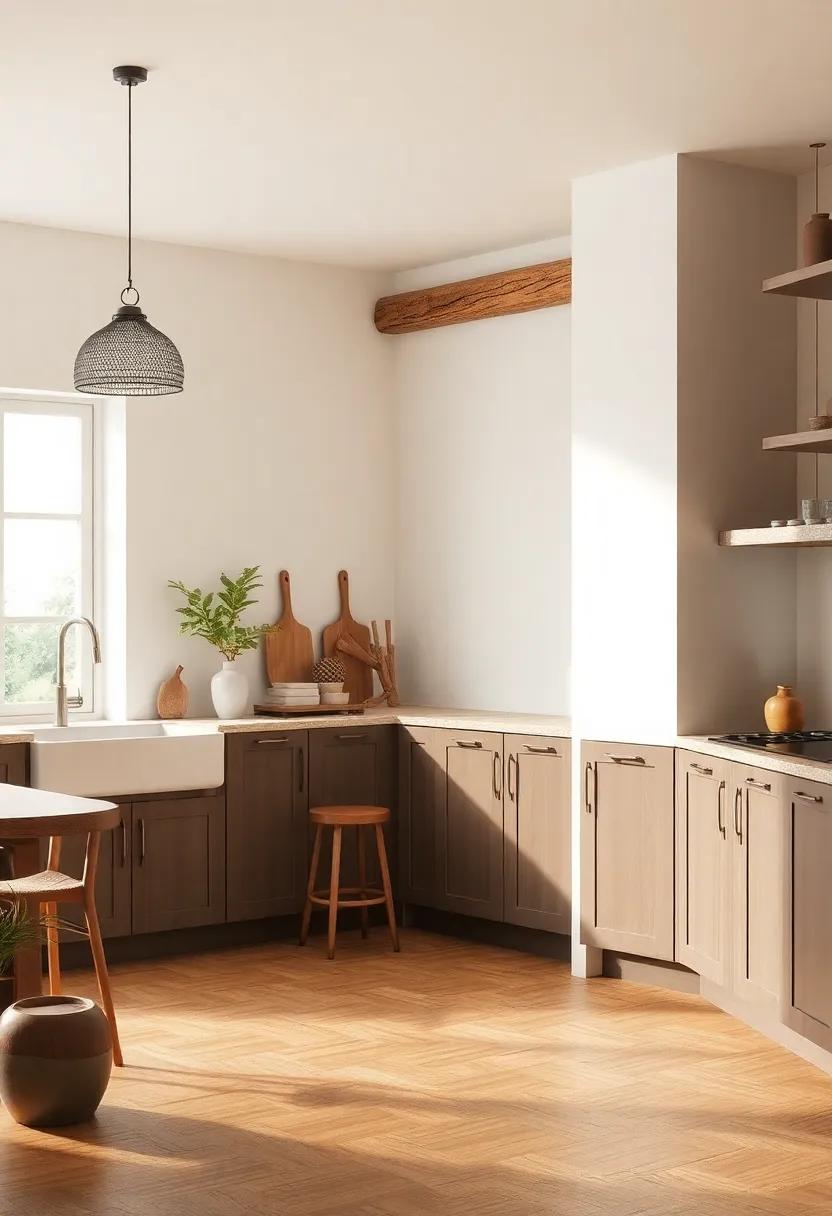
In the heart of any home lies the kitchen, a space where culinary magic unfolds. By integrating earthy tones, this often bustling area transforms into an inviting haven. Rich browns, soft greens, and muted terracotta not only create a warm atmosphere but also draw inspiration from nature, providing a sense of calm and connection with the outdoors. These colors can be seamlessly incorporated through various elements: elegant wooden cabinets, natural stone countertops, and even terracotta pots can contribute to the overall aesthetic. The beauty of earthy tones lies in their versatility, allowing homeowners to play with textures and patterns that enhance their personal style.
To elevate the rustic charm, consider pairing these grounding hues with complementary accents.Here are some suggestions to create a harmonious blend:
- Ceramic dishware in muted colors to maintain a cohesive theme.
- Textured textiles like linen or cotton tablecloths to introduce softness.
- Natural light through large windows to enhance the colors and create an open feel.
- Indoor plants to add life and further link the indoors with nature.
Additionally, opting for rustic lighting fixtures such as wrought iron or warm-hued pendant lights can highlight the earthy palette, creating a welcoming space for both cooking and gathering. Every detail, from the color of the walls to the texture of the furnishings, plays a crucial role in inviting warmth and serenity into your culinary space.
Bathing in Earthy Colors: Creating a Sanctuary at Home

Incorporating earthy tones into your living space can create a serene environment that mirrors the tranquility of nature. Think about using a palette that includes various shades of rich browns, muted greens, and soft terracottas, each evoking the natural world. By layering these colors throughout your home, you can achieve a harmonious balance that feels both cozy and inviting. Here are some effective ways to embrace earthy colors in your interiors:
- Furniture Selection: Choose items made from natural materials such as wood, stone, or wicker.
- Textiles: Look for fabrics in muted tones; consider linen, wool, and cotton for their organic textures.
- Accent Pieces: Incorporate handmade ceramics or terracotta pots to add depth and warmth to your decor.
To truly capture the essence of rustic charm, consider how light interacts with your earthy palette. Soft, diffused lighting can enhance the organic feel of your space. Complement your design choices with carefully curated decor elements that reflect the outdoors, such as:
| Element | Description |
|---|---|
| Natural Textures | Incorporate jute rugs, stone sculptures, and wood finishes for a tactile richness. |
| Greenery | Add indoor plants to breathe life into your space, enhancing both aesthetics and air quality. |
| Artisan Crafts | Choose artwork or crafts that celebrate earth tones and local craftsmanship. |
The Essence of Handmade Pottery in Rustic Decor
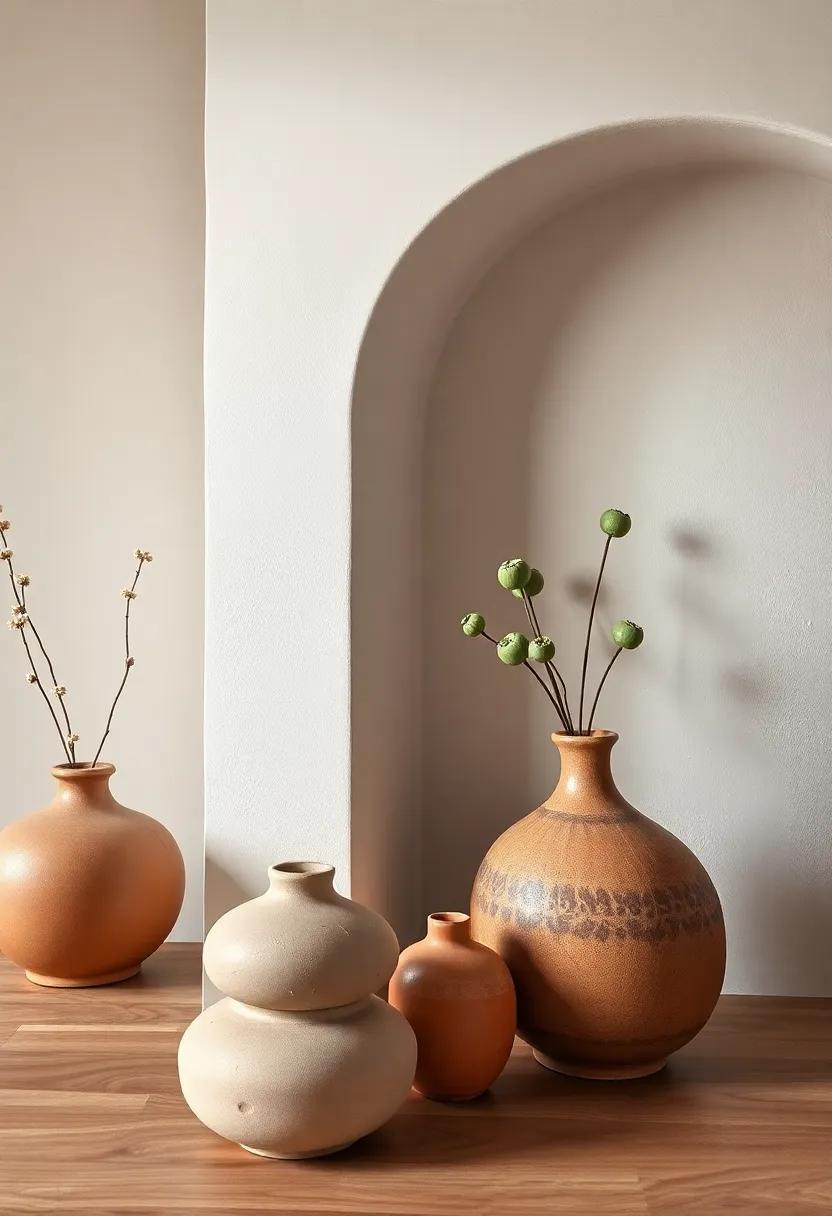
The allure of handmade pottery seamlessly intertwines with the rustic decor aesthetic, offering a tactile experience that connects us to the earth. Each piece tells a story, imbued with the unique fingerprints of the artisan who shaped it.Whether it’s a terracotta bowl adorned with organic textures or a glazed vase capturing the essence of natural pigments, these items evoke warmth and a sense of place. Emphasizing earthy tones, handmade pottery enhances the cozy atmosphere of a rustic interior, making each piece not just a decoration, but a conversation starter and a testament to craftsmanship.
Incorporating pottery into your space can bring a multitude of benefits:
- Unique Character: No two pieces are alike, lending individuality to your decor.
- Natural Elements: Clay, glaze, and neutral colors enhance the organic feel of rustic settings.
- Functionality: Handmade vessels serve both aesthetic and practical purposes, from holding fresh flowers to serving food.
| Type of Pottery | Key Features | Ideal Use |
|---|---|---|
| Terracotta | Natural Clay, unglazed finish | Planters, rustic bowls |
| Stoneware | Durable, frequently enough glazed | Dinnerware, vases |
| Porcelain | Refined, delicate | Decorative items, serving dishes |
Handmade pottery stands as a bridge between the past and present, reminding us of the beauty in simplicity and the importance of artisanal skills. As you curate your rustic decor,these handcrafted treasures will not only elevate your design but also foster a deeper connection to the environment,promoting sustainability and creativity in your home.
Natural Stone as a Centerpiece in Rustic Interior Design
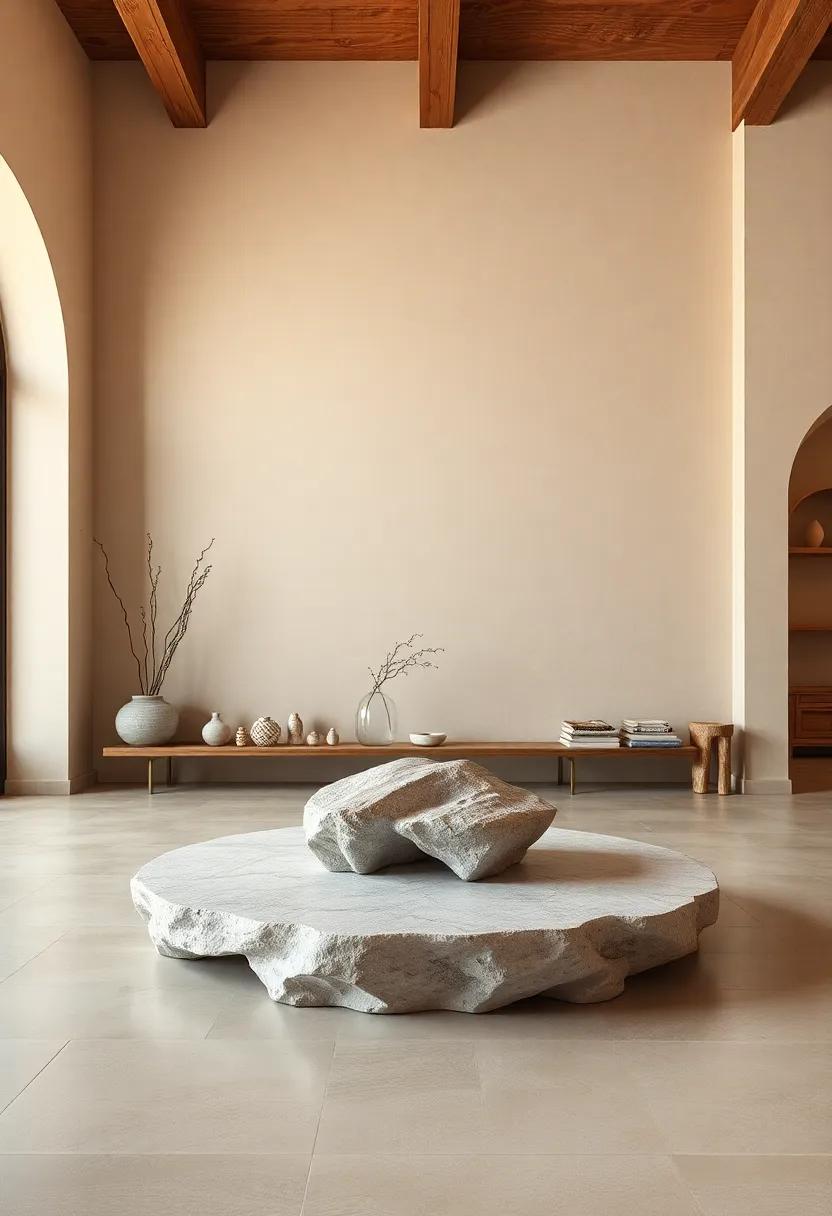
Natural stone offers a timeless appeal that seamlessly integrates with rustic interior design, creating an ambiance that echoes the beauty of the great outdoors. Granite, slate, and limestone not only add character but also introduce a variety of textures and colors that can enhance any space. Whether used for flooring, countertops, or accent walls, the inherent variations in stone allow for unique artistic expressions. Incorporating natural stone elements can evoke feelings of warmth and coziness, making it the perfect choice for creating inviting spaces. Imagine gathering around a limestone fireplace or enjoying breakfast on a polished granite table, where each piece tells its own story through its natural imperfections.
To effectively showcase natural stone, consider the following practical tips for your rustic interior design:
- Complement with Earthy Tones: Pair stone with warm, muted colors such as olive green, burnt orange, or deep browns to create a harmonious palette.
- Mix Materials: Combine stone with reclaimed wood and metal accents to add depth and contrast to your design.
- Focus on Lighting: Utilize soft lighting to highlight the textures of the stone, enhancing its natural beauty and creating a warm atmosphere.
- Incorporate Decorative Elements: Consider integrating plants, woven textiles, or handmade ceramics to accentuate the organic aspect of your space.
Softening Spaces with Earthy Linens and Textiles
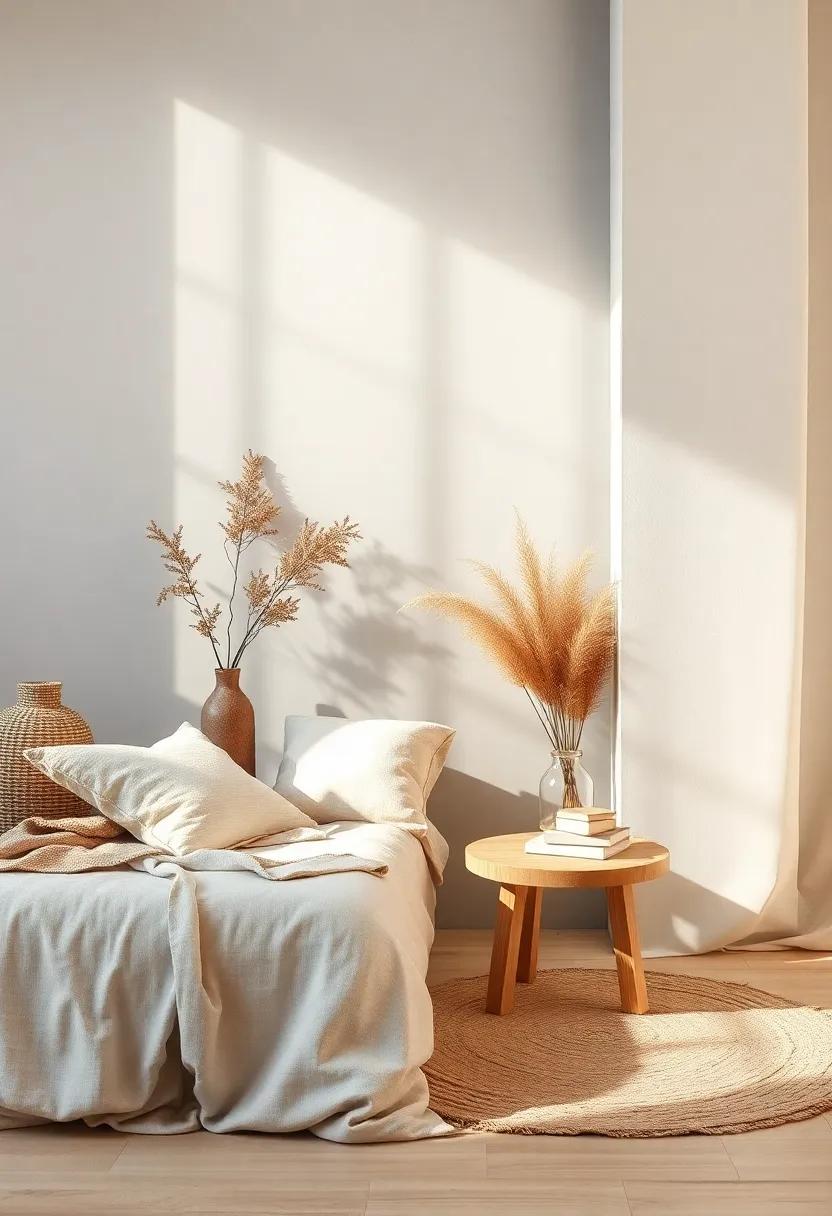
Incorporating earthy linens and textiles into your space can transform your interior from mundane to mesmerizing. Natural fabrics such as linen, cotton, and wool not only offer a tactile softness but also evoke a sense of grounding that resonates with the environment. Opt for neutral color palettes like warm beiges, soft greens, and muted browns, which can seamlessly blend with rustic elements and enhance the overall aesthetic. By layering these textiles through curtains, throw pillows, and table runners, you can create an inviting atmosphere that invites relaxation and comfort.
Beyond their visual appeal, earthy textiles bring practical benefits to your home. They are often breathable and durable, making them ideal for everyday use. When thoughtfully arranged, these materials can serve as focal points that complement wooden accents, stone features, and greenery. Consider the following elements when choosing your linens:
- Natural Fibers: Prioritize organic cotton or linen for a sustainable approach.
- Texture Variations: Mix different weaves like canvas and burlap to add depth.
- Subtle Patterns: Look for understated designs that enhance without overwhelming.
For a curated look, you might also want to explore the uses of textiles in functional furniture, such as upholstered sofas or oversized cushions that beckon for a cozy retreat. Here’s a quick guide to help you envision the best choices:
| Textile Type | Best use | Color Recommendation |
|---|---|---|
| Linen | Curtains | Soft Beige |
| cotton | Pillows | Earthy Green |
| Wool | Throws | Muted Brown |
an Inviting Entryway: Setting the Tone with Earthy Hues
Creating an entryway that welcomes guests while reflecting the serene essence of nature can be effortlessly achieved with a palette of earthy hues. Shades like soft taupe, warm terracotta, and muted olive not only evoke a sense of tranquility but also bring warmth to the space. Introducing these tones through your choice of paint,decor,or furniture allows for an inviting ambiance that resonates with the rustic charm of nature. Consider incorporating elements such as:
- Textured wall finishes that replicate the feel of natural materials.
- Handcrafted wooden benches that echo the essence of the outdoors.
- Subtle greenery to enhance the earthy color scheme.
- Woven textiles in natural fibers to add depth and comfort.
In addition to color, lighting plays a pivotal role in accentuating those warm tones. Using soft, ambient lighting can highlight the rich textures of your earthy selection, creating a cozy atmosphere. To better visualize how to blend these elements harmoniously, consider the following table which categorizes earthy colors and their possible applications within the entryway:
| Color | Application |
|---|---|
| Soft Taupe | Wall paint for a neutral backdrop |
| Warm Terracotta | Accent decor items like vases or sculptures |
| Muted Olive | Furniture upholstery or cushions |
| Rustic Brown | Wooden features like doors or rafters |
The Impact of Rustic Furniture on Cozy Living Environments
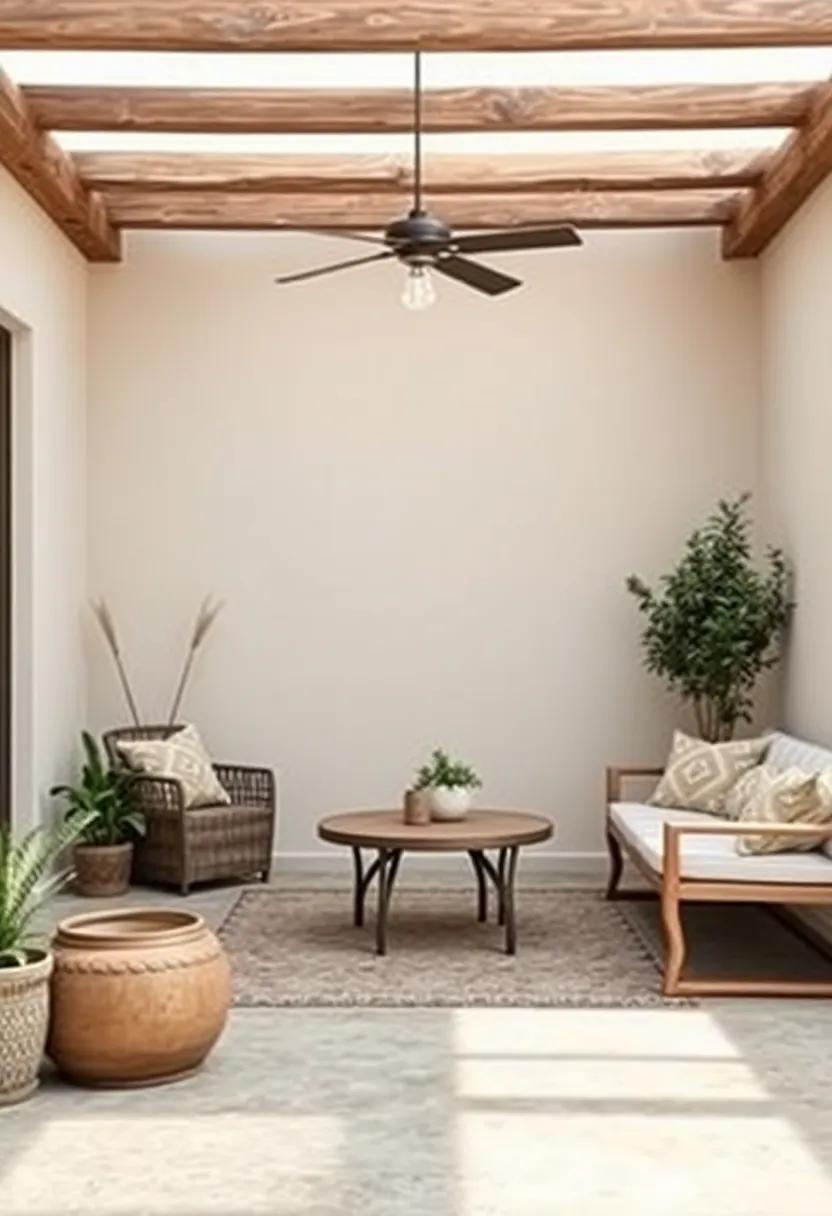
rustic furniture transforms living spaces into cozy retreats, weaving together elements of nature and warmth. The use of reclaimed wood, wrought iron, and natural fibers not only adds character but also creates an inviting atmosphere that encourages relaxation and connection. These materials often come with unique imperfections that tell a story, enhancing the rustic charm of the space. When combined with earthy tones, they evoke a sense of tranquility and comfort, making homes feel like sanctuaries. The tactile qualities of rustic pieces, from the smooth finish of a handcrafted table to the cozy embrace of a plush armchair, invite occupants to unwind and savor moments of stillness.
Incorporating rustic furniture invites a biophilic design approach, where the indoors harmoniously aligns with the outside world. Using items like wooden coffee tables and clay pottery not only elevates the aesthetic but emphasizes sustainability. Here are some key elements that enhance the cozy allure of rustic furnishings:
- Natural Textures: Emphasizes warmth and comfort.
- neutral and Earthy Palettes: Create a serene backdrop.
- Handcrafted Details: Infuses character and authenticity.
- Layering Materials: Adds depth and interest.
By intentionally selecting rustic pieces, homeowners can curate an environment that feels both familiar and peaceful. The synergy between the furniture and its surroundings fosters a space where family and friends gather, stories are shared, and memories are created, transforming everyday living into profound experiences.
Outdoor Inspirations: Crafting a Rustic Patio Retreat
Transforming your outdoor space into a rustic retreat is an opportunity to embrace the enchanting appeal of nature. Start by choosing earthy tones for your patio elements, allowing the scenery to dictate the palette. Rich browns from reclaimed wood, deep greens from lush plants, and soft grays from natural stones can create a harmonious blend that feels both inviting and serene. Consider incorporating elements such as weathered furniture, handcrafted tables, and organic textiles. To enhance the rustic charm,fill your space with climbing vines,hanging baskets,and traditional containers,which can add vertical interest and a sense of abundance.
lighting plays a crucial role in achieving the desired atmosphere for your rustic patio. Choose soft, warm lighting options such as string lights or lanterns made from natural materials. Not only do these illuminate the space softly at night, but they also accentuate the beauty of wood and stone finishes.Here are some essential features to consider for your rustic patio retreat:
- Natural Materials: Emphasize wood, wicker, and stone.
- Cozy Fire Pit: A gathering spot that enhances warmth and ambiance.
- Agreeable seating: Incorporate oversized cushions and organic fabrics.
- Botanical Elements: Add potted herbs and wildflowers for a touch of color.
| Element | Material | Purpose |
|---|---|---|
| Seating | Reclaimed wood and wicker | comfortable gathering space |
| Tables | Rustic barn wood | Stylish dining and display |
| Lighting | Handcrafted lanterns | Warm evening ambiance |
The Power of Gallery Walls: Showcasing Nature’s Beauty
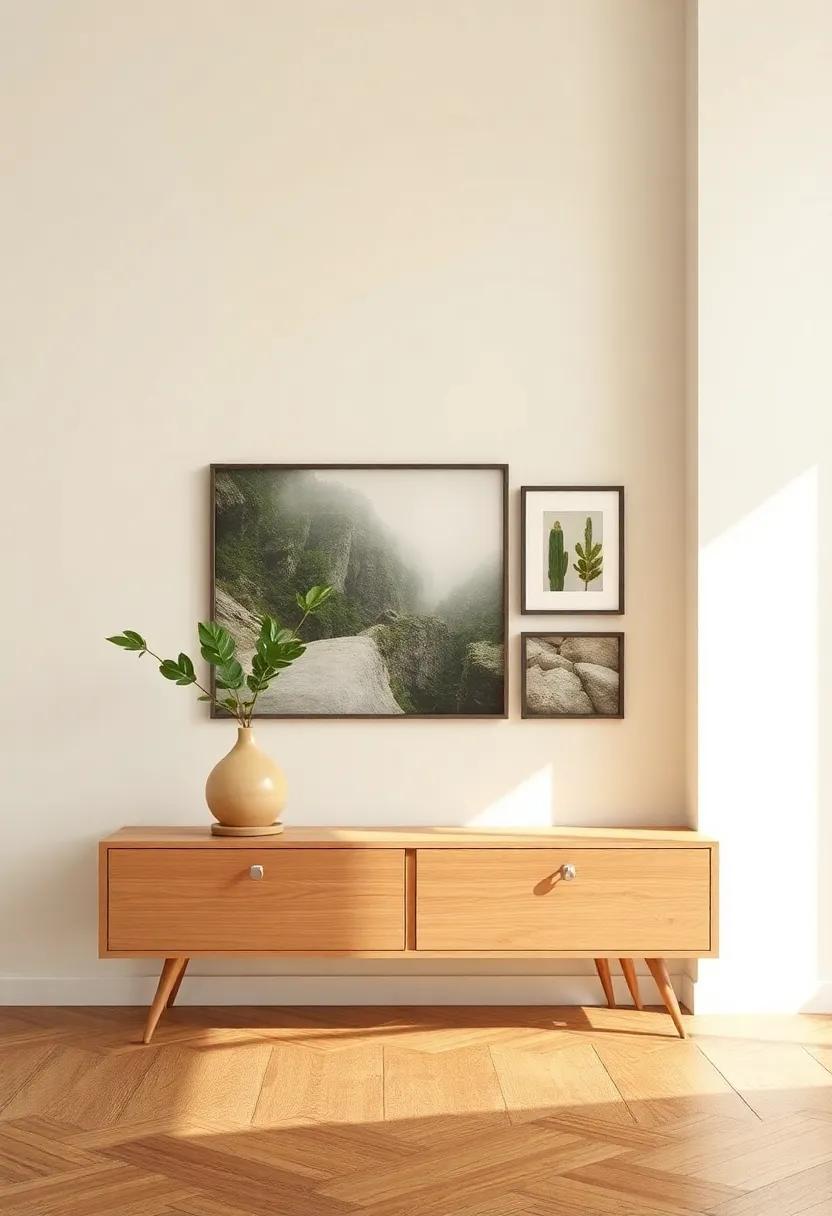
Gallery walls present a unique opportunity to effortlessly incorporate the splendor of nature into any interior.By curating a collection of artwork, photographs, or natural elements, you can create an atmosphere that allows the beauty of the outdoors to flow into your living space. When selecting pieces for your gallery wall, consider the following:
- Natural Materials: Use frames made from reclaimed wood or metal to accentuate the earthy tones.
- Nature-Inspired Artwork: Choose botanical prints, landscapes, or abstract representations of natural elements.
- Personal Touch: Incorporate your own photographs of nature to add a personal narrative to the space.
Arranging these elements thoughtfully can create a cohesive look that speaks to rustic charm while highlighting the tranquil essence of nature. Use varying frame sizes and orientations to add interest to the gallery wall, balancing between artwork and open space to prevent overwhelming the viewer. to guide the positioning, consider a simple grid layout or a more organic, freeform style that mimics the irregular beauty found in nature. Below is a concise table that illustrates different styles you can adopt for your gallery wall:
| Style | Description |
|---|---|
| Grid Layout | Symmetrical arrangement; perfect for a clean, modern look. |
| Salon Style | Mix of sizes and frames; creates a dynamic, eclectic feel. |
| Linear Arrangement | Horizontal or vertical lines; emphasizes simplicity and elegance. |
In Summary
As we draw the curtains on our exploration of earthy tones in rustic interior design, it becomes clear that the beauty of nature knows no bounds. These warm, organic hues invite tranquility and authenticity into our spaces, allowing us to reconnect with the natural world, even amidst the hustle and bustle of modern life.
By embracing the charm of rustic aesthetics, we not only cultivate a serene sanctuary within our homes but also celebrate the simplicity and richness that earth-inspired elements bring. Whether you choose soft browns, muted greens, or warm terracotta, these colors effortlessly weave a tapestry of comfort and style.
As you embark on your own design journey, may you find inspiration in the gentle beauty of the earth around you. Let these earthy tones guide your choices, and transform your home into a haven of rustic charm, where every corner resonates with the whispers of nature. Embrace the essence of the outdoors, and let it infuse your living space with a serene spirit that nurtures both body and soul.
As an Amazon Associate I earn from qualifying purchases.

